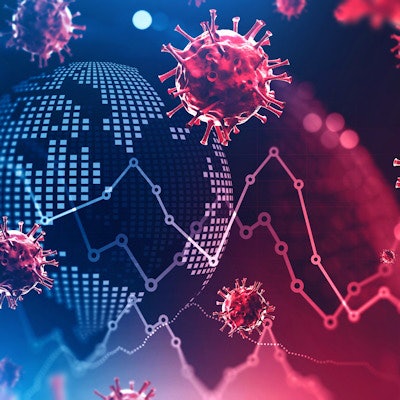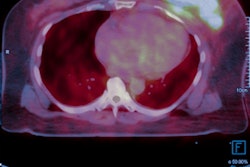
It's no secret COVID-19 has disrupted nuclear medicine clinical practice, research, and work environments. However, a new survey by the Society of Nuclear Medicine and Molecular Imaging (SNMMI) quantifies the effects: nearly 80% of respondents saw declines of 50% to 75% in non-PET nuclear medicine procedures.
An SNMMI COVID-19 task force led by Maria DaCosta, a nuclear technologist at Mount Sinai Hospital in New York, surveyed all active SNMMI members from 17 countries and asked about imaging volumes, radiopharmaceutical supplies, and a projected timeline for a return to prepandemic outputs.
"The pandemic will have evolved at the time these results are published, but the survey findings emphasize the profound manner in which COVID-19 has affected the [nuclear medicine and molecular imaging] community," she and her colleagues wrote in the Journal of Nuclear Medicine (September 2020, Vol. 61:9, pp. 17N-21N).
How life has changed
COVID-19 has disrupted the lives of everyone, those in the healthcare industry included. But just how broadly has the pandemic affected nuclear medicine professionals in terms of their practice, research, and work environments? That's what DaCosta and colleagues sought to find out in an electronic survey they launched on May 27 in tandem with a medical research survey. They kept the survey open for 16 days.
The research team received 263 responses from 17 countries, although the vast majority (90.4%) came from the U.S. The group found that most respondents (92.8%) saw a decrease in diagnostic nuclear medicine imaging study volumes as a result of the pandemic. For conventional nuclear medicine procedures (other than PET), most saw study volumes plummet: 37.2% experienced a 50% drop and 42.7% experienced a 75% drop.
For PET, 22.3% of respondents reported a 25% decrease in study volume while 17.8% saw a 50% decrease.
However, these respondents expected their imaging procedure volume to return to pre-COVID levels within the next six months.
Not all aspects of nuclear medicine have been severely impacted by the pandemic though. Nearly two-thirds of respondents said they had plenty of access to radiopharmaceuticals and nearly 84% said they had all the necessary personal protective equipment (PPE) they required.
Also, at a time when most physicians are encouraging telehealth visits, nearly half (49.2%) of nuclear medicine and molecular imaging professionals have not converted or are not planning to convert to telemedicine options. In fact, 71% still conducted some degree of in-person visits.
However, it's obvious business can't continue as usual, and a practice management plan is important, according to DaCosta and colleagues. Furthermore, plans should "address the morbidity and mortality associated with COVID-19, the disruption of lives, the financial instability of the healthcare system, as well as the effects of disease progression associated with delayed medical care."
Along those lines, more than half (53.5%) of respondents have a plan in place to restart operations where these have come to a stop or been significantly reduced. Those plans include limiting the number of patients in the waiting room, requiring social distancing, implementing new staff safety protocols, and requiring a higher level of PPE upon reopening.
What are the major stumbling blocks to ramping up practice or operations? A majority of respondents identified lack of patient confidence (54.5%) and the ongoing nature of the pandemic (52.3%) as the primary impediments, with the implementation of social distancing also acknowledged as a difficult challenge.
However, any plan is better than no plan because it allows a practice the ability to handle the "unpredictable severity, mortality, and rates of infection and recovery with COVID-19 or other pandemics."
A dynamic management plan also allows practices to be "better prepared to preserve and restore the financial aspect of the practice," according to DaCosta and colleagues.



















